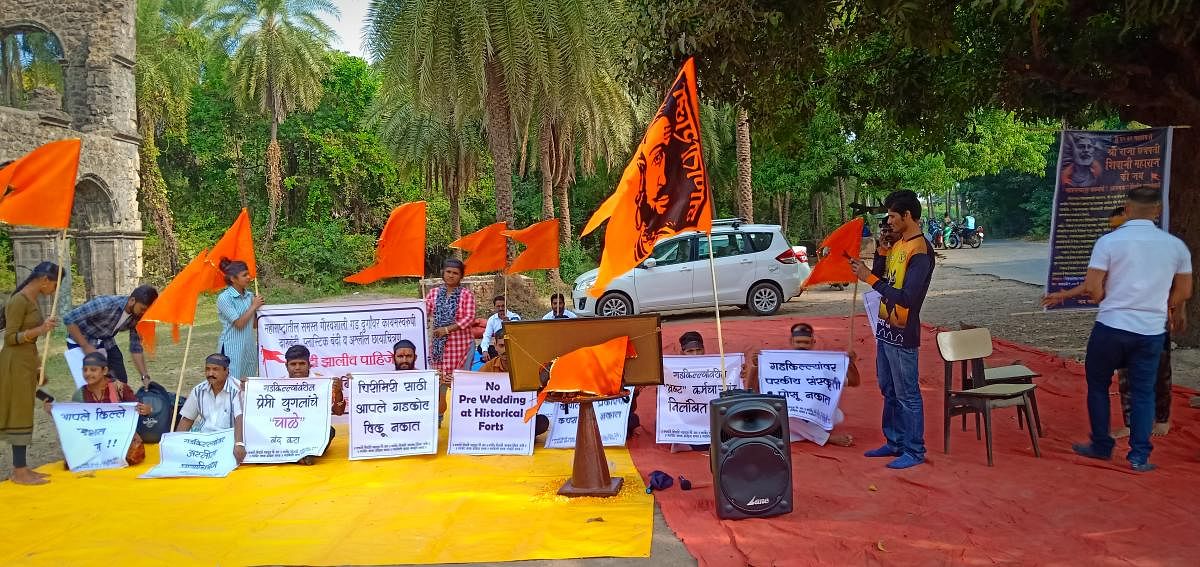
The Vasai Fort near Mumbai has been witnessing to several pages of history spanning over five to six centuries. However, shooting and pre-wedding shoots, graffiti by lovers are damaging the fort that comes under the Archaeological Survey of India (ASI).
To highlight the issue, over the weekend, a sit-in by fort lovers led by Kille Vasai Mohim was held opposite the ASI office in the Vasai Fort at Palghar district, nearly 70 km from downtown Mumbai.
Fort conservationist Sridutta Raut has been corresponding with ASI on the issue of the threats that the fort faces. "If we ask for permission to organise any event, we are denied....how are pre-wedding shoots allowed," he said.
"The Vasai Fort is an important fort....it needs to be conserved," said Amit Samant of Trekshitij, who had visited and documented most of the forts in Maharashtra.
Vasai’s history is older than that of Bombay, now Mumbai or rather the modern history of Mumbai had started from Vasai.
The Vasai Fort today may wear a deserted look, but a visit here gives you a mix of history, art, heritage, culture, maritime prowess, fortification, nature because of its rich flora and fauna.
Also known as the Bassein Fort, dating back to 1532, it was built to provide protection to the entire province of Bassein.
This was a territory controlled by Bahadur Shah, the Sultan of Gujarat who ceded it to the Portuguese in 1534.
Thereafter, Nano da Cuna laid the foundation of the city and fortified it further. In the 18th century, the fort was taken over by the Maratha Army under Peshwa Bajirao’s brother, Chimaji Appa.
The British shortly attacked and took over the territory from the Marathas as the price of supporting one faction of Marathas against another.
The Treaty of Bassein on 23 December 1534 and 31 December 1802 are significant milestones in the history of Mumbai and Maharashtra.
The first treaty was signed by Sultan Bahadur of Gujarat and the Kingdom of Portugal while on board the galleon São Mateus. After that, the Portuguese gained control of the city of Bassein, as well as its territories, islands and seas. The Mumbai islands which fell under Portuguese control included Colaba, Old Woman's Island, Mumbai, Mazagaon, Worli, Matunga, and Mahim. Salsette, Daman and Diu, Thane, Kalyan, and Chaul were other territories controlled and settled by the Portuguese.
The second treaty between the British East India Company and Bajirao II, after the Battle of Poona. The treaty was a decisive step in the dissolution of the Maratha empire, which led to the East India Company's control of the empire's territories in western India in 1818.
In between the two treaties, 1534 and 1802 are two important developments.
Another important chapter from history was in May 1739, when Chimaji Appa, the younger brother of Bajirao Peshwa, captured the Vasai Fort from the Portuguese.
Chimaji Appa died in 1740. The conquest of Bassein was long cherished by the Marathas as a matter of national pride and glory.